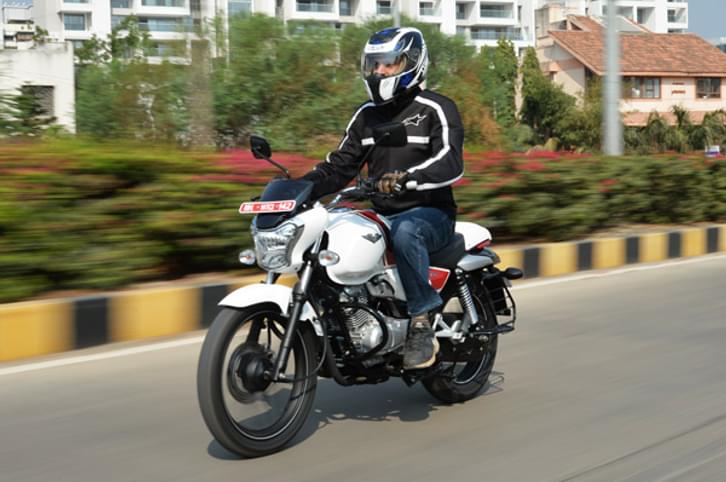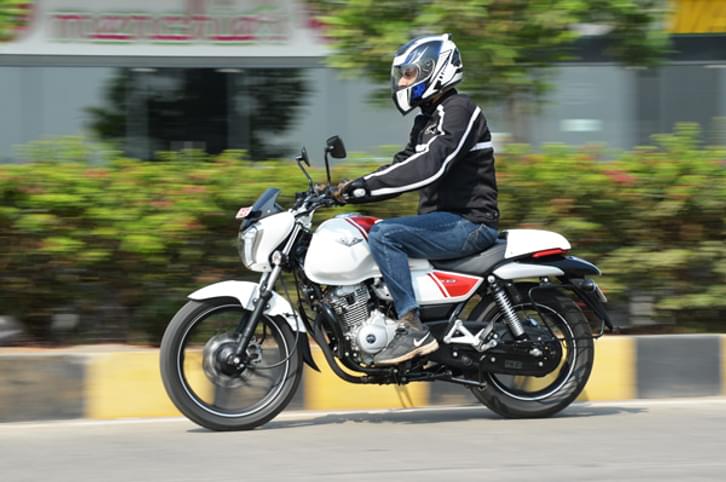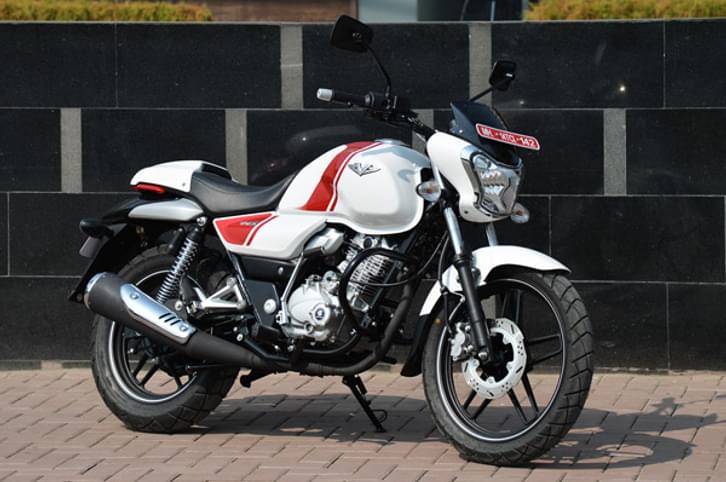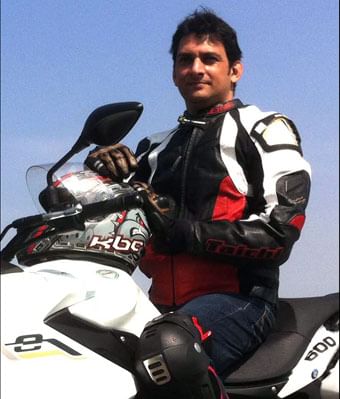Bajaj V15 review, test ride
A patriotic lot, aren’t we? Look no further than the INS Vikrant-inspired V15. Here’s how the Bajaj cruiser behaves on the street.
Updated on Mar 03, 2016 11:59:27 AM
29,866 Views
Follow us on



It’s been only a few months since Bajaj brought in the latest generation of Avengers in late 2015, introducing a new 150 to fill an empty market vacuum. The 150cc Avenger cruisers have since been flying off the shelf, making this the right time to bring on the V15, another 150cc, with more muscle and the added appeal of including a small percentage of steel from India’s famous warship, INS Vikrant, within its fuel-tank.
Marketing masterstroke!
The INS Vikrant angle is a marketing coup that shall undoubtedly see the Bajaj V15 warm to the massive armed forces audience, serving and retired, also drawing interest from those of us who respect our men in uniform. That’s not what we are here for although; with our test aimed solely at uncovering the un-gilded truth of how the V15 performs on urban Indian roads.
In terms of styling, we are a tad disappointed with the V15, which lacks the classic cruiser charm of the Avengers, and from the front, looks like an awkward blend of the fascia of a Discover, and some Moto Guzzi design elements, as seen from the tank region backwards. However, the rear has all the smartness and neat proportions we hoped for. A neat touch is the V15's contrast-colour grab bars. Overall quality is visibly up on the well put together V15, the bike showing off a smart pearl white shade, and neat decals and logos.
To sit on, the V15 feels like a Bajaj, with decent palm grips, a smart set of mirrors, nice control levers and smooth-functioning switches. The V15 instruments are legible, and easy on the eye, with a clever feature being the fuel-gauge doing a chameleon, to change from green to red as fuel level dips into reserve zone.
The V15 rides on a set of black wheels, the front a much larger 18-inch unit, compared to the 16-inch rear rim, and this gives the bike its unique stance. The seat comes with neat sutures in contrasting colour. There’s a removable cowl for the rear seat, which comes as a paid option, at an extra Rs 1000 and is easily removed using the key as your tool.
To V, or not to V
Most Bajaj bikes top their segment in terms of power output, which is where the V15 differs. It’s all about rider friendliness and useable torque on this one, the V15 deploying a button-started, four-stroke and air-cooled, 149.5cc engine. The DTS-i, twin-spark plug fired motor is air-cooled and carburettor-fed, making 11.8bhp at 7,500rpm, considerably lower than its Bajaj segment rivals. The V15’s claim to fame is 1.3kgm of torque that it puts down at just 5,500rpm.
True to its intent, the twin-valve V15 feels torque rich, an effortless motorcycle to pilot in slow speed traffic, with only a light twist-of-the-wrist enough to have you trot off from rest. There’s a wide powerband and flat torque curve, both evident on the V15 soon after revs rise past idle. Clutch feel is light, with just the right weight. The five-speed V15 gearbox shifts smoothly, whether working your way up or down through this transmission.
We didn't like the V's gearshift pattern, all-up and not the more universal 1-down, rest-up pattern.
Expect about 50kpl, real world fuel efficiency.
Performance matches the V15’s cruiser character, with extra dozes of torque responding with eagerness at low- to mid-engine speeds, although you could find the V15 runs out of steam the moment you try and hustle it along, riding it like the sportsbike it isn’t, and doesn’t pretend to be.
As on all new-gen Bajaj bikes, the V15 comes with smooth powerplant, a good exhaust note, no vibes intruding on riding pleasure when riding sensibly, and respectable performance to tackle with and ace in the stop and go of urban India.
Cruise control
The V15 riding position is upright, and comfortable enough, handlebars reaching back to you. It isn't as laid back as the Avenger cruiser, but close enough, with relatively quicker handling that puts the rider in a more positive position. The suspension is telescopic front forks and twin gas-charged shock absorbers at the rear. The chassis is double cradle, tubular steel constructed, with a steel swingarm.
The V15 seat feels plush, also nice and low, making this Bajaj motorcycle easy to ride for virtually any and everyone, sitting at any point of the experience spectrum. Handling is good in the city, with the V15 offering fine ride quality. Likewise, the brakes work well, with good stopping power generated by a 240mm, petal type disc unit in the front, and standard 130mm drum at rear.
The V15 makes a great option if you're looking for a unique, city commuter, and it's positioned to shine in a niche where there's really no competition. Priced superbly, the V undercuts an Avenger 150 by a whopping margin, so you can expect to see a lot more of these patriotic Bajaj machines. The INS Vikrant is set to live on for a long time to come.
Rishad Cooper
Copyright (c) Autocar India. All rights reserved.






























Comments
Member Login
Personal Details
No comments yet. Be the first to comment.